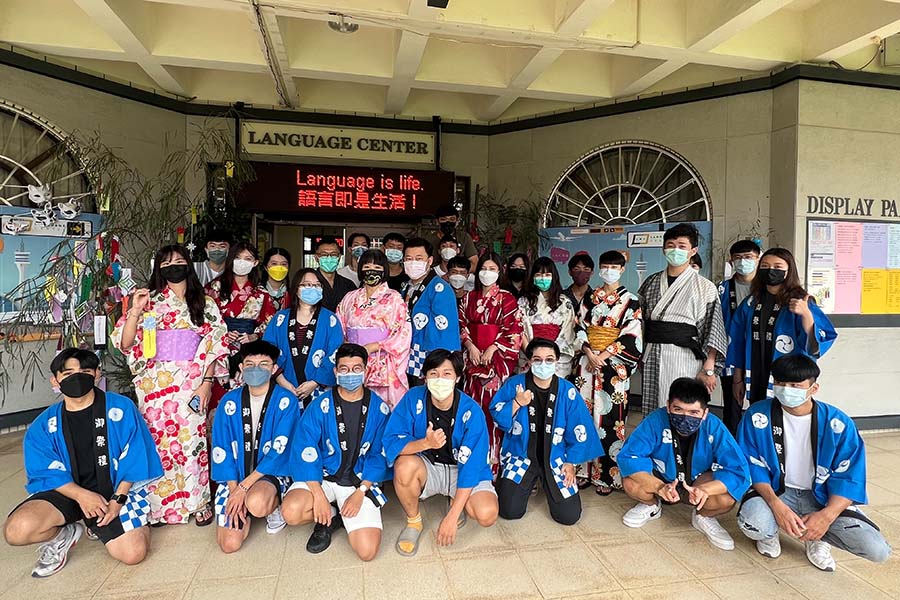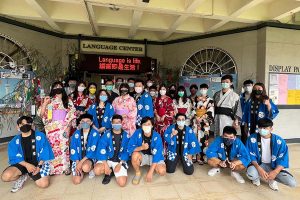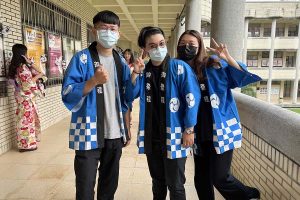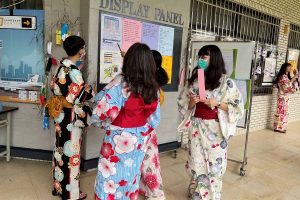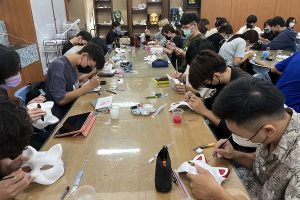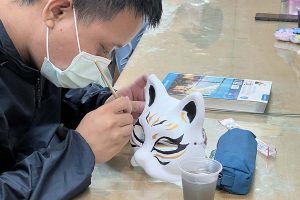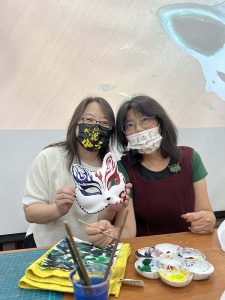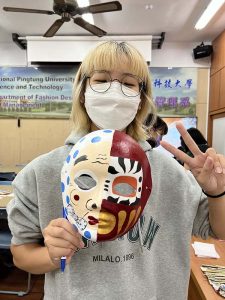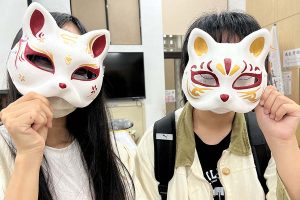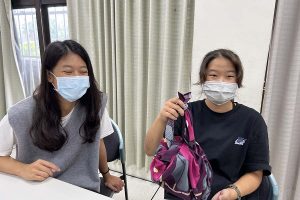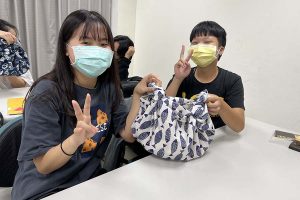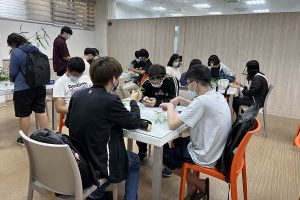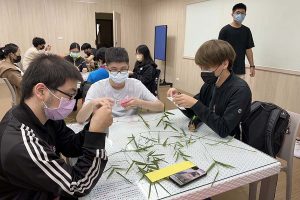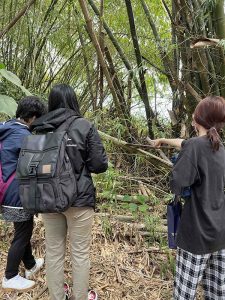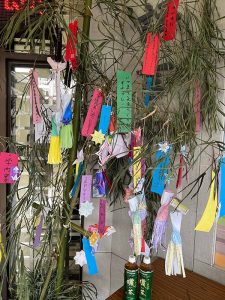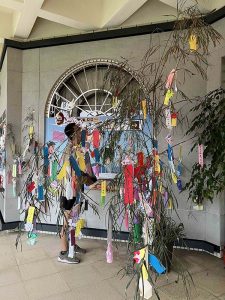Language is life. To embody the application of language learning in daily life, the Language Center organized the “Wish-fulfilling Tanabata Festival” starting from November 4th at the 3rd floor of the Comprehensive Building. The event included activities such as making yukata handkerchief bags, wearing yukata, and writing wishes on colorful strips of paper (tanzaku) to hang on bamboo branches, symbolizing resilience and upward growth, to express blessings. Simultaneously, a Yokai (supernatural creatures in Japanese folklore) mask painting activity was held. Students showcased their creativity by designing Yokai images, displaying them alongside the colorful wish strips on bamboo branches, creating a harmonious blend that instantly transported participants to Japan!
The Wish-fulfilling Tanabata Festival draws inspiration from the Japanese Tanabata Festival, a prayer event held during the midterm exams and leading up to the school anniversary. Guests participating in the event write their wishes and blessings on colored wish paper cards, praying for their dreams to come true and offering blessings to the prosperity of the school. In addition to wish cards, participants also utilize origami to create small items related to their wishes, decorating wish cards to enhance the chances of their wishes coming true!
The Wish-fulfilling Tanabata Festival was guided by Director Chien Ho-lin of the Language Center, organized by Ms. Peng Chiung-hui from the Japanese Language Teaching Division, with the assistance of Mr. Chen Hsi-hung. Director Chia-an Lo-kai of the Leisure and Recreation Office was invited to assist in cutting bamboo for the bamboo branches. The Yokai mask painting activity was organized by Ms. Peng Chiung-hui, with the collaboration of Mr. Chen Hsiu-tsu, a teacher from the Department of Fashion Design and Management, who guided students on Japanese mask painting techniques. The activity explored the world of Yokai, created by the late Japanese Yokai expert Shigeru Mizuki on his centenary, introducing students to various types of Yokai and their symbolic meanings. Using traditional Japanese mask expressions, students were guided to paint their envisioned Yokai images. The painted masks were then displayed on the wall alongside the wish cards, attracting participants to explore Japan’s Yokai culture.
Director Chien Ho-lin expressed his hope during the opening ceremony that students would experience Japanese culture through the event and understand how they could apply their Japanese language learning in practical ways. Ms. Peng Chiung-hui explained that students applied Japanese language sentence patterns related to “will, hope, and prayer” on the wish cards. Through activities such as origami, making yukata handkerchief bags, and learning about Japanese Yokai culture, students learned relevant vocabulary and Japanese expressions for these processes. Participating students stated that cultural activities enhanced their Japanese language learning experience. The hands-on process allowed them to express their creativity, making it both fun and effective for learning. They also expressed their hopes for their wishes to come true. Mr. Chen Hsi-hung thanked the Kaohsiung Branch of the Japan-Taiwan Exchange Association for lending Japanese festival costumes and wooden clogs, adding a touch of Japanese style to the event.
Director Chia-an Lo-kai expressed his pleasure in assisting the activity. Bamboo is widely used in Japanese daily life and artistic landscaping, and there may be future collaborations with the Language Center for related applied activities. Mr. Chen Hsiu-tsu, from the Department of Fashion Design and Management, explained that Japanese Yokai convey joy, anger, sorrow, and happiness through facial expressions and eye movements, with facial colors and lines distinguishing characters as virtuous or malicious. Behind some seemingly eerie masks, there are unique stories and meanings.


